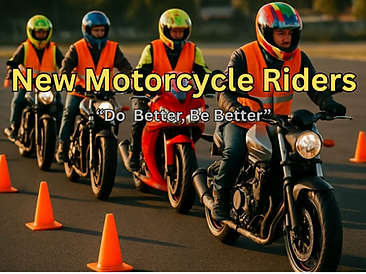The Benefits of Face Coverings for Motorcyclists and Their Protective Features
- NMR

- 4 days ago
- 3 min read
Riding a motorcycle offers freedom and excitement, but it also exposes riders to harsh elements and potential hazards. One common gear that motorcyclists rely on is face coverings. These are more than just fashion statements or ways to keep warm—they serve important protective functions that enhance safety and comfort on the road. Understanding why motorcyclists wear face coverings and the features that make them effective can help riders make better gear choices and improve their riding experience.

Protection Against Wind and Debris
One of the primary reasons motorcyclists wear face coverings is to shield themselves from wind and airborne debris. When riding at high speeds, the wind can be harsh on the face, causing discomfort and distraction. A face covering acts as a barrier that reduces wind chill and prevents dust, insects, small stones, and other particles from hitting the skin or entering the mouth and nose.
This protection is especially important on highways or rural roads where debris is more common. For example, a rider traveling at 60 miles per hour can experience wind pressure equivalent to a strong breeze pushing directly against their face. Without a face covering, this can cause dryness, irritation, or even minor injuries from flying objects.
Temperature Regulation and Comfort
Face coverings help regulate temperature by providing insulation in cold weather and moisture-wicking in warmer conditions. Many are made from breathable fabrics that trap heat close to the skin while allowing sweat to evaporate. This balance keeps riders comfortable during long rides in varying climates.
In colder months, a face covering prevents heat loss from the face, which is one of the most exposed areas. This reduces the risk of cold-related issues such as chapped skin or even frostbite in extreme cases. On the other hand, in hot weather, lightweight face coverings protect against sunburn and help absorb sweat, preventing it from dripping into the eyes.
Enhancing Respiratory Protection
Breathing in dust, exhaust fumes, and pollen can be a problem for motorcyclists, especially in urban areas or on dusty roads. Face coverings act as filters that reduce the amount of harmful particles inhaled. While they are not medical-grade masks, many face coverings use materials designed to trap larger particles and reduce exposure to pollutants.
For riders with allergies or respiratory sensitivities, this can make a significant difference in comfort and health. For instance, a rider commuting through a city with heavy traffic may notice less throat irritation and coughing when wearing a face covering.
Improving Helmet Fit and Hygiene
Face coverings also contribute to better helmet fit and hygiene. Wearing a face covering under the helmet liner can reduce friction between the skin and helmet padding, making the helmet more comfortable to wear for extended periods. It can also absorb sweat, keeping the helmet interior cleaner and reducing odor buildup.
This is particularly useful for riders who wear their helmets daily or for long distances. A clean and comfortable helmet fit improves concentration and reduces distractions, which enhances overall safety.
Protection from Sun Exposure
Sun exposure can cause skin damage, premature aging, and increase the risk of skin cancer. The face is one of the most vulnerable areas since it is often exposed during rides. Face coverings provide an extra layer of protection against harmful UV rays.
Many face coverings come with UV protection ratings, blocking a significant percentage of ultraviolet light. This helps prevent sunburn and reduces the need for frequent reapplication of sunscreen, which can be inconvenient during rides.
Types of Face Coverings and Their Features
Motorcyclists have several options when it comes to face coverings, each with unique features suited for different needs:
Balaclavas: Cover the entire head and neck, leaving only the eyes exposed. Made from thermal or moisture-wicking materials, they provide excellent cold-weather protection.
Neck Gaiters: Tubular fabric that can be pulled up over the nose and mouth. Lightweight and versatile, they offer moderate protection and are easy to carry.
Bandanas: Simple cloth pieces tied around the face. While less protective, they help block dust and sun.
Face Masks with Filters: Some advanced masks include replaceable filters for better particle filtration, useful in polluted environments.
Windproof and Waterproof Masks: Designed to block wind and rain, these masks improve comfort in harsh weather.
Choosing the right face covering depends on the rider’s environment, weather conditions, and personal preferences.
Practical Tips for Using Face Coverings
To get the most from a face covering, riders should consider these practical tips:
Ensure the face covering fits snugly but comfortably to avoid slipping during rides.
Choose materials that balance breathability and protection to prevent overheating.
Wash face coverings regularly to maintain hygiene and prevent skin irritation.
Combine face coverings with other protective gear like helmets and goggles for full-face protection.
Replace worn or damaged face coverings to maintain effectiveness.





.png)



Comments